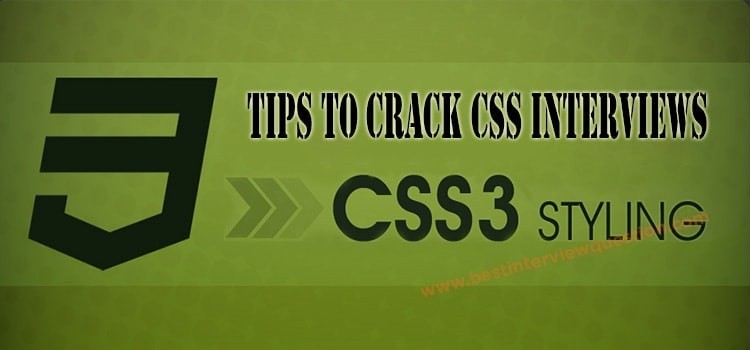Tips to crack CSS Interviews

8 Tips for Crack CSS Interviews
Looking for some quick and easy tips for acing CSS Interview? Are you tired of searching for a perfect one-stop solution? Nothing to worry. Here is the fix. In this article, you would come to know the hack of landing into your dream job giving your best to Advanced CSS Interview Questions and Answers.
Introduction to CSS
Before moving to the tips and tricks, let us take a look at the definition of CSS. It is a Cascading Style Sheet language which helps incorrectly describing the presentation of a document written in HTML or any other Markup language. Apart from the widely used names of the technologies such as JavaScript and HTML, CSS is another cornerstone technology of WWW, World Wide Web.
Latest Version of CSS
Companies have been into using CSS3 as the updated version of CSS. It has extended CSS2. Learn the newly added characteristics in CSS3 and gain high marks in CSS3 Interview Question and Answers for experienced.
1. Rounded Corners
#bestinterviewquestion {
border-radius: 25px;
}
2. Text Shadow
#bestinterviewquestion {
text-shadow: #FC0 1px 0 10px;
}
3. Box Shadows
You can add drop shadows to elements with the help of box-shadow property specifying the width, height, color, offset and blur.
#bestinterviewquestion {
box-shadow: 2px 5px 0 0 rgba(72,72, 72, 1);
}
Grab the best scores in your interview following these tips
1. Types of CSS
The three types of CSS are Inline, Internal and External
2. Font Properties
CSS font properties are-
- font-weight
- font-variant
- font-style
- font-size
- font-family
- font
3. Pseudo-Classes and elements
These are the classes used for defining a specific state of an element. CSS Selector can be combined with pseudo-classes for adding an effect to the existing elements as per their state. :root selector, :target selector are added in CSS3.
4. Margin and Padding
Margin is a shorthand property to set the properties in only one declaration. Padding is used for generating space around the content of an element with borders of any value.
For each side of an element for margin and padding, there are top, right, bottom and left options. Also, the other properties are inherited, length, width (%), etc.
Example of margin
5. Floats
This property helps in formatting the content as well as positioning it. Four properties of the float are left, right, none, inherit
For example
img {
float: right;
}
It can be left, right or none.
6. Clearing Floats
You can apply clearing floats when you know about the succeeding element. There are several methods for the same, such as Empty Div Method, Overflow Method, Easy Clearing Method.
7. Position
It is the property which determines the positioning method for an element such as absolute, sticky, fixed, static, relative.
Example
img {
position: static;
}
8. Display
It controls the layout as per the type of the element. Types of displays are
- inline
- block
- table
- inline-block
- none
